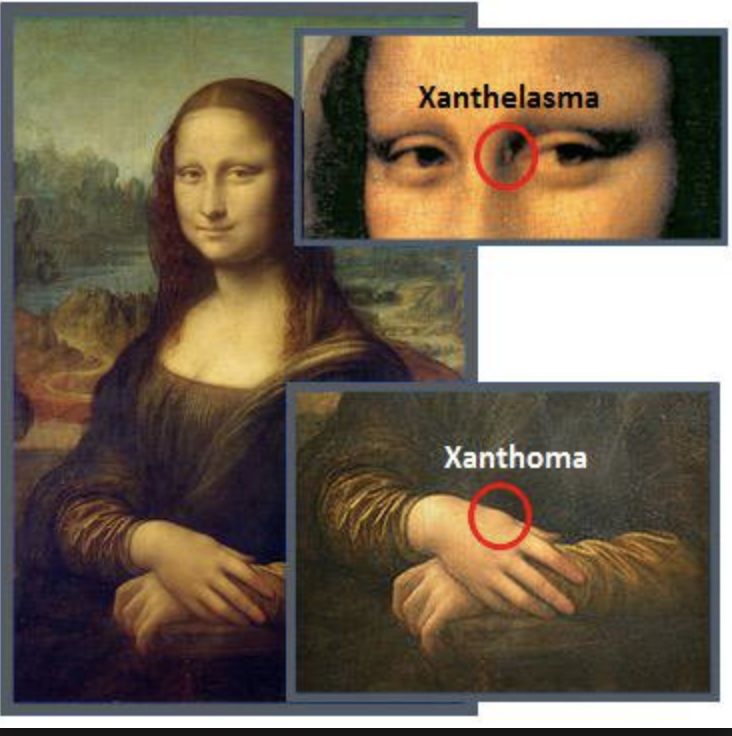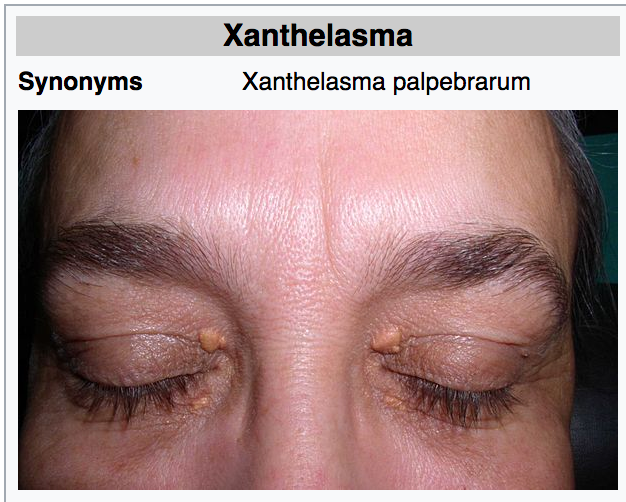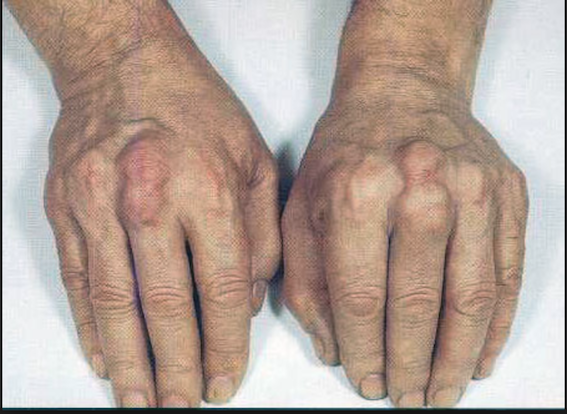When Medicine and Art Overlap - Did Mona Lisa Have High Cholesterol?
Many of you may have traveled to The Louvre in Paris to see the a bunch of people staring at arguably the most iconic painting in the world, the Mona Lisa, painted by Leonardo Da Vinci between 1503-1506. When I visited the museum as an eager biology student in 2013, I had no clue of the biological details of the painting I was overlooking. I paid more attention to the Mona Lisa's piercing eyes than her skin.
Flash forward to 2018, I'm studying medicine, specifically learning about fatty plaque build-up in coronary artery disease, and Da Vinci's master work pops back up into my life. Why are photos of the Mona Lisa in my lecture slides? Well it turns out clinicians have carefully gone over the painting, and have ascertained two places on the young Ms. Lisa's skin suggestive of high lipids (fats) and high cholesterol in the blood (hypercholesterolemia). According to an NCBI article, there's a "yellow irregular leather-like spot at the inner end of the left upper eyelid and a soft bumpy well-defined swelling of the dorsum of the right hand beneath the index finger about 3 cm long".

Unbeknownst to most, including myself until literally just now, Da Vinci actually studied the build up fats and cholesterol in the arteries, a process called atherosclerosis. Yep, he was an artist, inventor and scientist, and this fell into his sciency endeavors. The "yellow irregular leather-like spot at the inner end of the left upper eyelid" is thought to be depicting a cholesterol deposit called xanthelasma. When your blood is holding more cholesterol than it needs, LDLs or Low Density Lipoproteins which carry cholesterol, become elevated, travel around the blood and can lead to these xanthelasmas, or cholesterol deposits beneath the skin, usually around the inner eye. These cholesterol deposits don't just pile up randomly under the skin, rather they build up in a type of specialized macrophage (immune cell that eats foreign invaders) called a foam cell.
 !
!Thank you Wikipedia! Look at this photo, and then back up at the Mona Lisa and notice the similarity.
What about the Mona Lisa's "soft bumpy well-defined swelling of the dorsum of the right hand beneath the index finger about 3 cm long". Well this one is harder for me to see in the painting, but it is thought to be a manifestation of the same underlying issue of increased LDL and increased cholesterol in the blood. This manifestation is called a tendon xanthoma. "Xanthos" means 'yellow' in greek, accounting for the yellow hue of the lesions due to cholesterol build-up, and xanthomas present with nodules, which gives this diagnosis credence in Mona because of the bumpiness on her hand. Here's another look at tendon xanthoma is the hands:

Pretty amazingly, the Mona Lisa may be the first evidence of Familial Hypercholesterolemia. It's a reminder that Mona Lisa was a real person like you and me. She actually died at age 37, and though the cause is unknown, atherosclerosis leading to heart attack would be a pretty good deduction based on this painting.
Hope you enjoyed this and hope to post more soon,
Check out this article for more interesting details: https://www.ncbi.nlm.nih.gov/pmc/articles/PMC2774586/
Other sources: https://en.wikipedia.org/wiki/Xanthoma
Congratulations @steemmate! You received a personal award!
You can view your badges on your Steem Board and compare to others on the Steem Ranking
Do not miss the last post from @steemitboard:
Vote for @Steemitboard as a witness to get one more award and increased upvotes!